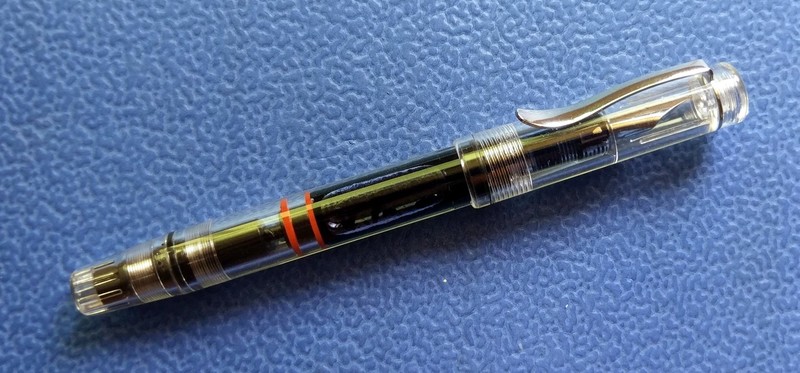Understanding Radiculopathy Treatment Step-by-Step
1
0
·
2025/07/16
·
7 mins read
☕
WriterShelf™ is a unique multiple pen name blogging and forum platform. Protect relationships and your privacy. Take your writing in new directions. ** Join WriterShelf**
WriterShelf™ is an open writing platform. The views, information and opinions in this article are those of the author.
Article info
Categories:
⟩
⟩
Tags:
Total: 1632 words
Like
or Dislike
More from this author
More to explore










Radiculopathy is a common condition that affects millions of people worldwide, causing pain, numbness, and weakness that can significantly impact daily life. If you've been experiencing shooting pain down your arm or leg, tingling sensations, or muscle weakness, you might be dealing with radiculopathy. Understanding this condition and its treatment options is the first step toward finding relief and getting back to your normal activities.
This comprehensive guide will walk you through everything you need to know about radiculopathy, from recognizing the early signs to exploring effective treatment options including pregabalin tablets . Whether you're experiencing symptoms for the first time or looking for better ways to manage your condition, this article provides clear, easy-to-understand information to help you make informed decisions about your health.
What is Radiculopathy?
Radiculopathy occurs when a nerve root in your spine becomes compressed, inflamed, or damaged. This condition can affect any part of your spine but most commonly occurs in the neck (cervical radiculopathy) or lower back (lumbar radiculopathy). When nerve roots are affected, they can't function properly, leading to various uncomfortable symptoms that may extend far from the actual site of the problem.
Symptoms of Radiculopathy
The symptoms of radiculopathy can vary depending on which nerve root is affected and the severity of the condition. Common symptoms include:
Pain Symptoms:
Neurological Symptoms:
Functional Symptoms:
The symptoms typically follow the distribution of the affected nerve, which is why cervical radiculopathy causes arm symptoms while lumbar radiculopathy affects the legs.
Causes of Radiculopathy
Understanding the causes of radiculopathy helps in both prevention and treatment. The most common causes include:
Age-Related Changes:
Structural Problems:
Traumatic Causes:
Other Factors:
Signs of Radiculopathy
Recognizing the early signs of radiculopathy can help you seek treatment before the condition worsens. Watch for these warning signs:
Early Warning Signs:
Progressive Signs:
Serious Signs Requiring Immediate Attention:
If you experience any of these serious signs, seek medical attention immediately as they may indicate a more severe condition requiring urgent treatment.
Radiculopathy Treatment Options
Effective radiculopathy treatment typically involves a multi-faceted approach tailored to your specific condition and symptoms. Treatment options range from conservative methods to more advanced interventions.
Conservative Treatment Methods
Physical Therapy: Physical therapy forms the cornerstone of radiculopathy treatment. A skilled therapist will design exercises to strengthen supporting muscles, improve flexibility, and reduce pressure on affected nerve roots. Regular physical therapy sessions can significantly improve symptoms and prevent future episodes.
Medication Management: Various medications can help manage radiculopathy symptoms. These may include anti-inflammatory drugs, muscle relaxants, and specialized nerve pain medications. Your healthcare provider will determine the most appropriate medication based on your specific symptoms and medical history.
Activity Modification: Adjusting daily activities and improving posture can reduce stress on affected nerve roots. This might involve ergonomic workplace adjustments, proper lifting techniques, and avoiding activities that worsen symptoms.
Hot and Cold Therapy: Alternating between heat and cold applications can help reduce inflammation and provide pain relief. Heat therapy relaxes muscles and increases blood flow, while cold therapy reduces swelling and numbs pain.
Advanced Treatment Options
Epidural Steroid Injections: These targeted injections deliver anti-inflammatory medication directly to the affected area, providing significant pain relief for many patients. The effects can last several months and may be repeated if necessary.
Nerve Root Blocks: These precise injections target specific nerve roots to provide both diagnostic information and therapeutic relief. They can help identify which nerve is causing problems and provide targeted treatment.
Surgical Interventions: When conservative treatments aren't effective, surgical options may be considered. These might include discectomy, laminectomy, or fusion procedures, depending on the underlying cause of the radiculopathy.
Pregabalin Pills: A Targeted Treatment Option
Pregabalin pills represent an important advancement in radiculopathy treatment, particularly for managing nerve pain. This medication belongs to a class of drugs called anticonvulsants but has proven highly effective for neuropathic pain conditions.
How Pregabalin Works: Pregabalin works by binding to calcium channels in nerve cells, reducing the release of neurotransmitters that signal pain. This mechanism makes it particularly effective for the burning, shooting, and electric shock-like pain often associated with radiculopathy.
Benefits of Pregabalin:
Typical Dosing: Pregabalin treatment usually starts with a low dose that's gradually increased based on your response and tolerance. Your healthcare provider will determine the optimal dose for your specific situation.
Important Considerations: Always take pregabalin exactly as prescribed by your healthcare provider. Don't stop taking it suddenly, as this can cause withdrawal symptoms. Regular follow-up appointments are important to monitor your response and adjust treatment as needed.
Precautions and Safety Measures
Taking proper precautions is essential for managing radiculopathy effectively and preventing complications. Here are important safety measures to keep in mind:
General Precautions
Avoid Aggravating Activities:
Maintain Proper Body Mechanics:
Medication Safety
When Taking Pregabalin:
General Medication Guidelines:
Red Flag Symptoms
Seek immediate medical attention if you experience:
Lifestyle Precautions
Exercise Safely:
Workplace Safety:
Prevention Strategies
Preventing radiculopathy recurrence is often possible with the right approach:
Maintain Physical Fitness: Regular exercise strengthens supporting muscles and improves spinal health. Focus on core strengthening, flexibility exercises, and cardiovascular fitness.
Practice Good Posture: Proper alignment reduces stress on your spine throughout the day. Be mindful of your posture while sitting, standing, and sleeping.
Manage Your Weight: Excess weight puts additional stress on your spine. Maintaining a healthy weight reduces the risk of developing radiculopathy.
Stay Active: Regular movement prevents stiffness and maintains spinal health. Even gentle activities like walking can be beneficial.
When to See a Healthcare Provider
Don't hesitate to seek medical attention if you experience:
Early intervention often leads to better outcomes and can prevent the condition from becoming chronic.
Frequently Asked Questions (FAQs)
Q: How long does it take for radiculopathy to heal? A: Recovery time varies greatly depending on the severity of the condition and treatment approach. Mild cases may improve within a few weeks with conservative treatment, while more severe cases might take several months. Some people experience significant improvement within 6-12 weeks of starting appropriate treatment.
Q: Can radiculopathy be cured permanently? A: While radiculopathy can often be effectively treated and symptoms can completely resolve, the underlying structural changes that caused it may remain. However, with proper treatment and lifestyle modifications, many people can achieve long-term relief and prevent recurrence.
Q: Is surgery always necessary for radiculopathy? A: No, surgery is typically reserved for severe cases that don't respond to conservative treatment. Most people with radiculopathy improve with non-surgical treatments including physical therapy, medication, and lifestyle modifications.
Q: Are there any side effects of pregabalin pills? A: Common side effects may include dizziness, drowsiness, weight gain, and dry mouth. Most side effects are mild and improve as your body adjusts to the medication. Always discuss any concerns with your healthcare provider.
Q: Can I exercise with radiculopathy? A: Yes, but exercise should be guided by a healthcare professional. Gentle exercises and physical therapy are often beneficial, but high-impact activities or exercises that worsen symptoms should be avoided initially.
Q: What lifestyle changes can help with radiculopathy? A: Maintaining good posture, staying active within your limits, managing stress, maintaining a healthy weight, and avoiding smoking can all help improve symptoms and prevent recurrence.
Q: How do I know if my radiculopathy is getting worse? A: Warning signs include increasing pain, progressive weakness, expanding numbness, or new symptoms. If you experience any of these changes, contact your healthcare provider promptly.